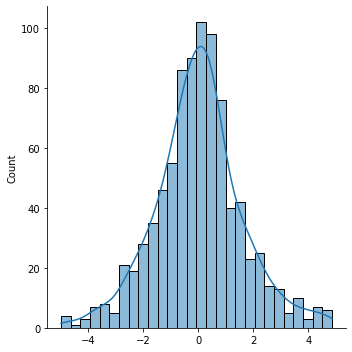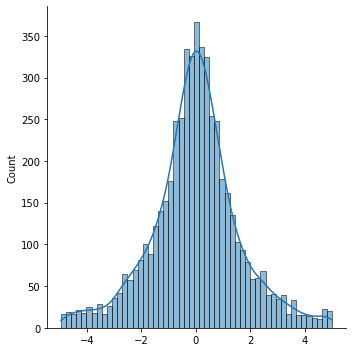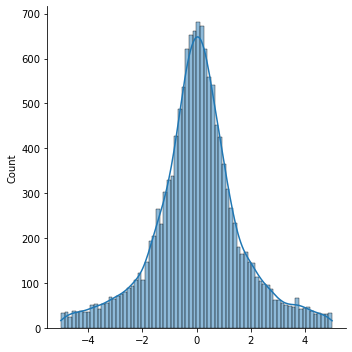Description
The classic Central Limit Theorem (CLT) states that if \(X_i, i \in \mathbb{N}\) is a sequence of iid. random variables with finite second moment then
\(\frac{X_1 + \ldots + X_n - n\mu}{\sqrt{n}} \to \sigma \mathcal{N}(0,1)\),
where \(\mathbb{E}[X_1] = \mu, \mathbb{E}[X_1^2]= \sigma^2\) and \(\mathcal{N}(0,1)\) is a standard Gaussian random variable. The moment condition \(\mathbb{E}[X_1^2]<\infty\) is necessary and ensures that the random variables are in the normal domain of attraction of the Gaussian distribution.
If this moment condition is relaxed, sums of i.i.d. random variables may give rise to other limit laws. As it turns out, these limit laws will be stable random variables, in the sense that if \(X_1,X_2\) are independent versions of a given stable random variable \(X\), then for all \(a_1,a_2>0\) there are \(b>0\) and \(c \in \mathbb{R}\) such that
\( a_1X_1 + a_2 X_2 \overset{d}{=} b X + c.\)
Stable random variables have been studyied before the discovery of it's many applications. One reason for this being that the study of the sum of iid. random variables leads to the inquiry of all it's possible scaling limits and the stable random variables appear in a more general version of the Central Limit Theorem.
In applications, one is often interested in estimates of the distance between a converging sequence and it's limit. The study of stable random variables is done with the help of characteristic functions and it is possible to estimate the rate of convergence of random variables in the normal domain of attraction of stable laws by means of the converence of their fourier transform. To measure the distance between probability measures, there is a large number of non equivalent metrics and no general theory exists that provide sharp bounds. However, there is an art to it and some general methods may be explored to find good bounds on the convergence rate, depending on the application at hand.

A.

B.

C.
The Cauchy stable random variable increasing precision: A =100, B = 500, C = 1000.
The project will start from the classical study of stable random variables as presented in''Limit Distributions for Sums of Independent Random Variables'' by Gnedenko and Kolmogorov [1954] or ''Probability'' by Leo Breiman [1968] and then will move to more recent estimates on the rate of convergence for the stable CLT. There are different lines of investigation and your may concentrate on
- Berry-Essen bouns in the classical CLT
- Estimates of the Kolmogorov distance in the \(\alpha\)-stable CLT for \(\alpha \in (0,2)\) ,
- Estimates of the Wasserstein distance in the \(\alpha\)-stable CLT for \(\alpha \in (1,2)\).
You may also concentrate on applications such as:
- Stable laws in random media,
- Stable laws and Poisson point processes,
- Stable laws and Stein's method.
Prerequisites
Probability II. A basic knowledge of Stochastic processes is desirable.